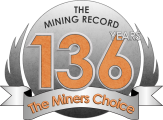Dark Star Exploration Update
Dark Star Exploration Update
VANCOUVER – Gold Standard Ventures Corp. announced drill results from 14 reverse circulation (RC) sonic holes and 5 core holes at the Dark Star oxide gold deposit. Drill holes DR20-01 through DR20-09 were previously released. Key Exploration Highlights: Drill holes DR20-10 through DR20-14 tested for extensions of bedrock mineralization at Dark Star Main. The oxide mineralization results reported in DR20-12 (57.9m @ 0.68 g Au/t) and DR20-14 (29.0m @ 0.56 g Au/t) continue to demonstrate that that mineralization remains open to the east at Dark Star Main.
Jason Attew, President and CEO, said, “Dark Star Main remains open to the east and provides an opportunity to incrementally grow the resource base with further drilling. Any additional ounces delineated at Dark Star would be economically attractive given mineralization starts at surface and is planned to be mined early in the project life.â€
Development Highlights: Drill holes DC20-01 through DC20-05 were completed as geotechnical core holes designed to assess pit wall stability and design. DC20-05 (11.2m @ 1.77 g Au/t) did intersect oxide mineralization along the West Fault; Drill holes DR20-15 through DR20-23, and SS21-13 through SS21-14 were completed on a zone of gravels east of the Dark Star Main deposit. The gold grades intersected represent an eroded portion of the Dark Star Main deposit and are currently being evaluated for utilization / suitability as over-liner on the proposed heap leach pad.
All Gold Standard sampling was conducted under the supervision of the Company’s senior geologists and the chain of custody from the project to the sample preparation facility was continuously monitored. A blank, certified reference material, or rig duplicate was inserted approximately every tenth sample. Samples were delivered to Bureau Veritas Mineral Laboratories preparation facility in either Sparks, NV or Hermosillo, Mexico where they were crushed and pulverized. Resulting sample pulps were digested and analyzed for gold using fire assay fusion and an atomic absorption spectroscopy (AAS) finish on a 30-gram split. Over limit gold assays were determined using a fire assay fusion with a gravimetric finish on a 30-gram split. All other elements were determined by ICP in Vancouver, B.C. Data verification of the analytical results included a statistical analysis of the standards and blanks that must pass certain parameters for acceptance to insure accurate and verifiable results.




Comments (0)